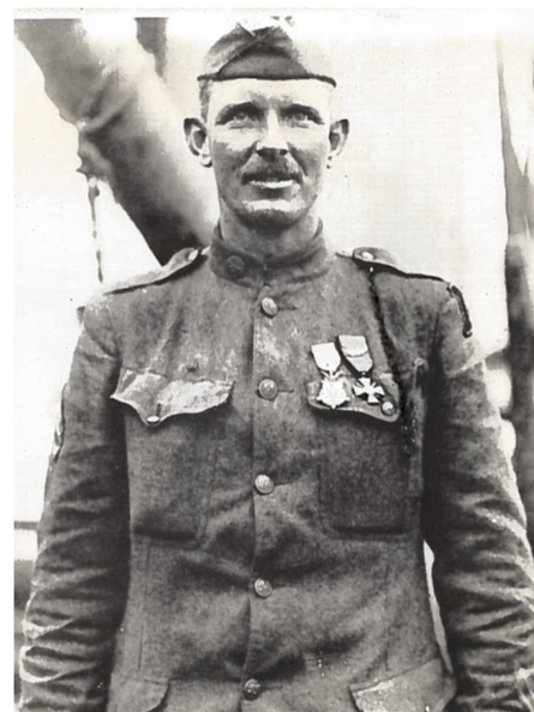American History in a Microcosm
This essay originally appeared in the Daily Times on June 5, 2023 (here).
Taylor Sheridan has become a sensation with his hit series Yellowstone and the prequels 1883 and 1923. Television audiences seem to have an insatiable appetite for action-packed depictions of American history. I enjoy them, too, but when it comes to historical drama, Tennessee has plenty to offer: literary giants, war heroes, prison breaks, union violence, etc. Did you know, for example, that this country’s most acclaimed author, who used the pseudonym Mark Twain, was conceived in Tennessee?

That’s right. Before moving to Missouri in 1835, the parents of Samuel L. Clemens (Twain’s real name), John Marshall Clemens and Kentucky-born Jane Lampton Clemens, lived for several years in Jamestown, Tennessee, in Fentress County. Twain’s father, a lawyer, was a leading citizen of Jamestown, having served as circuit court clerk, postmaster, and Fentress County Commissioner, in which capacity he reportedly drafted the plans for the county’s first courthouse and jail. He also practiced law and operated an unprofitable general store.
Life was difficult on the Cumberland Plateau in the 1830s, and John Clemens’ failing store and imprudent land speculation prompted him to move his family to Missouri in May 1835 for financial reasons. Samuel Clemens was born on November 30, 1835, having been conceived in the Volunteer State. John Clemens’ fortunes improved somewhat in Missouri, where he was elected justice of the peace in Hannibal, a location on the banks of the Mississippi River that inspired many scenes in The Adventures of Tom Sawyer and The Adventures of Huckleberry Finn. Jamestown, the seat of Fentress County, remains very proud of its connection to America’s most famous writer. Downtown Jamestown features Mark Twain Park.
Twain traveled widely, as a river boat pilot, prospector, journalist, writer, and lecturer, but he never lived in Tennessee, unlike Fentress County’s other noteworthy celebrity, World War I hero Sgt. Alvin C. York. York was born in a two-room log cabin in rural Pall Mall, Tennessee in 1887. One of 11 children to parents who farmed, York grew up in poverty, with little formal education. Despite his religious objections to violence, he was drafted in 1917 at age 29, and sent to France to fight the Germans in the Meuse-Argonne offensive on the notorious “western front” (horrifically brought to the screen recently in the movie All Quiet on the Western Front).
York’s remarkable heroism and bravery in battle led him to become one of the most decorated soldiers in WWI. York received the Medal of Honor for leading an attack on a German machine gun nest, gathering 35 machine guns, killing at least 25 enemy soldiers, and capturing 132 prisoners. York’s feat made him a national hero and international celebrity among allied nations. In 1941 the movie Sergeant York, directed by Howard Hawks with Gary Cooper in the title role, told his amazing story. Cooper won an Academy Award for best actor and the film was the top-grossing movie in 1941. But York was more than a decorated war hero.

After the war, the modest York returned to East Tennessee and spurned endorsement offers and other opportunities to exploit his fame. Instead, he campaigned for the state to build a highway over the mountains to provide access to his region, which when completed was aptly named Alvin C. York Highway. He also promoted vocational training for youth in his community. The Alvin C. York Institute continues to serve as Jamestown’s high school. His farm in Pall Mall—where he lived for the rest of his life–is open to visitors as the Sgt. Alvin C. York Historic Park. A veteran’s hospital in Murfreesboro is named after him, among many other honors.
Did you know that the maximum-security Brushy Mountain State Penitentiary in Petros, Tennessee (closed in 2009), once housed the infamous James Earl Ray, the convicted assassin of Martin Luther King, Jr.? In 1977, Ray managed briefly to escape, along with six other inmates, but was captured within a few days. He died behind bars in 1998 at age 70, but Ray’s former cell (#28) is a popular stop for visitors to the prison, which operates as a macabre museum in Morgan County, adjacent to Frozen Head State Park.
When you think of coal mining, you probably think of West Virginia, but Tennessee’s Cumberland Mountains used to produce most of the nation’s coal, from an area in Anderson County. Coal mining is a dangerous, difficult endeavor. The Fraterville Mine explosion in 1902, near modern day Rocky Top, took the lives of 216 miners, making it the worst mining disaster in Tennessee history and one of the deadliest in U.S. history.

The same area was the stage for the so-called Coal Creek War in 1891-92, when thousands of coal miners violently protested mine operators’ use of leased convict labor to work the mines. The dispute, which occurred between Coal Creek (now called Rocky Top) and Briceville, resulted in armed conflict, prompting the governor to summon the state militia. Hundreds of miners were arrested. The use of leased convict labor was abolished in 1892, but convicts at Brushy Mountain were forced to work at a state-owned mine from 1896 to 1966!
Taylor Sheridan couldn’t make up stories as interesting as these.

































